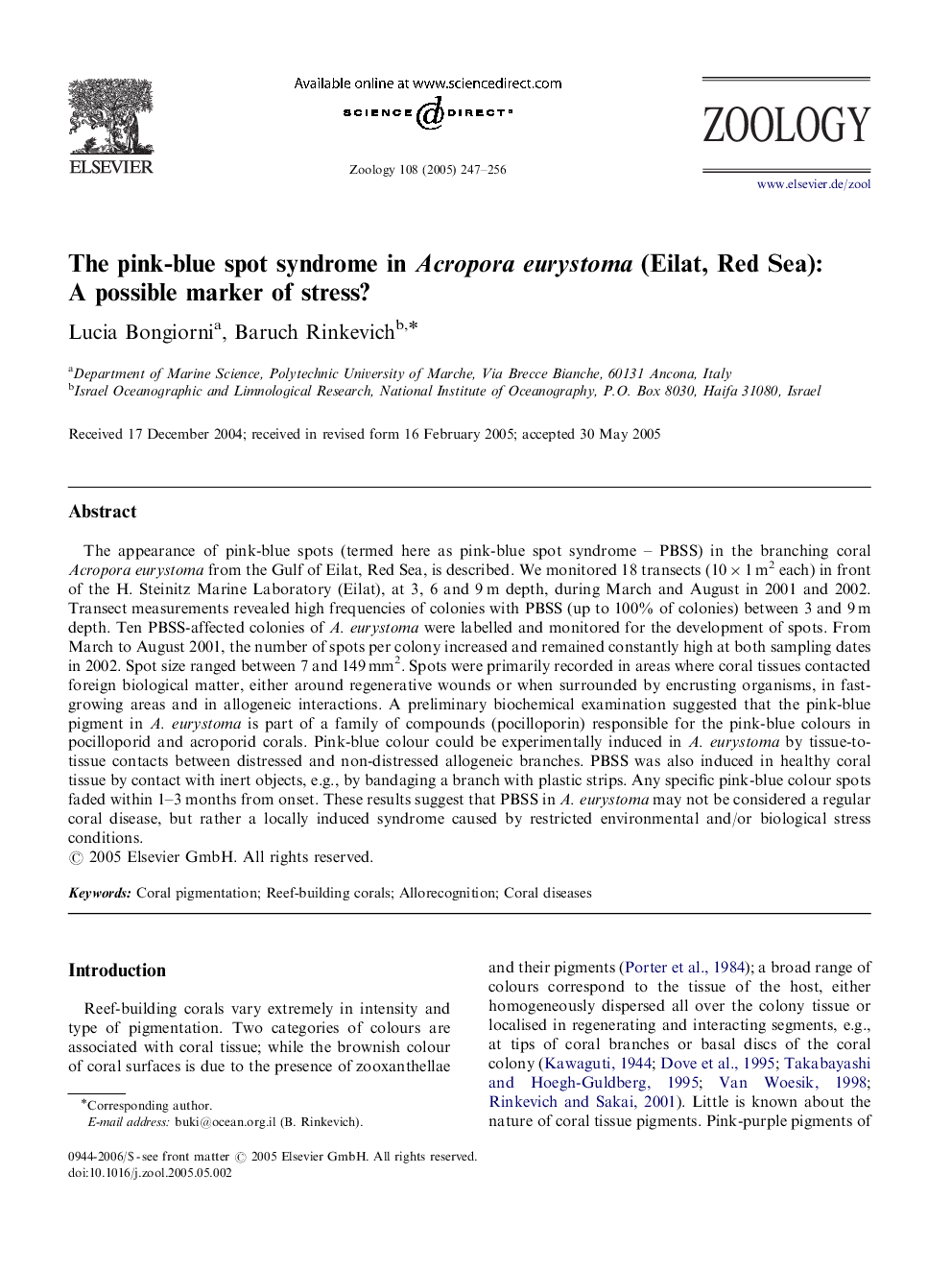| Article ID | Journal | Published Year | Pages | File Type |
|---|---|---|---|---|
| 9110037 | Zoology | 2005 | 10 Pages |
Abstract
The appearance of pink-blue spots (termed here as pink-blue spot syndrome - PBSS) in the branching coral Acropora eurystoma from the Gulf of Eilat, Red Sea, is described. We monitored 18 transects (10Ã1Â m2 each) in front of the H. Steinitz Marine Laboratory (Eilat), at 3, 6 and 9Â m depth, during March and August in 2001 and 2002. Transect measurements revealed high frequencies of colonies with PBSS (up to 100% of colonies) between 3 and 9Â m depth. Ten PBSS-affected colonies of A. eurystoma were labelled and monitored for the development of spots. From March to August 2001, the number of spots per colony increased and remained constantly high at both sampling dates in 2002. Spot size ranged between 7 and 149Â mm2. Spots were primarily recorded in areas where coral tissues contacted foreign biological matter, either around regenerative wounds or when surrounded by encrusting organisms, in fast-growing areas and in allogeneic interactions. A preliminary biochemical examination suggested that the pink-blue pigment in A. eurystoma is part of a family of compounds (pocilloporin) responsible for the pink-blue colours in pocilloporid and acroporid corals. Pink-blue colour could be experimentally induced in A. eurystoma by tissue-to-tissue contacts between distressed and non-distressed allogeneic branches. PBSS was also induced in healthy coral tissue by contact with inert objects, e.g., by bandaging a branch with plastic strips. Any specific pink-blue colour spots faded within 1-3 months from onset. These results suggest that PBSS in A. eurystoma may not be considered a regular coral disease, but rather a locally induced syndrome caused by restricted environmental and/or biological stress conditions.
Keywords
Related Topics
Life Sciences
Agricultural and Biological Sciences
Animal Science and Zoology
Authors
Lucia Bongiorni, Baruch Rinkevich,
